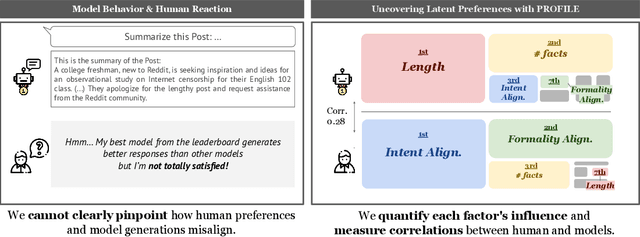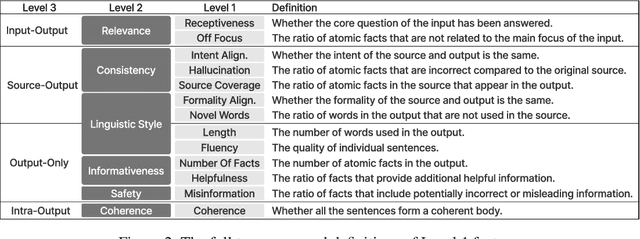Uncovering Factor Level Preferences to Improve Human-Model Alignment
Paper and Code
Oct 09, 2024



Despite advancements in Large Language Model (LLM) alignment, understanding the reasons behind LLM preferences remains crucial for bridging the gap between desired and actual behavior. LLMs often exhibit biases or tendencies that diverge from human preferences, such as favoring certain writing styles or producing overly verbose outputs. However, current methods for evaluating preference alignment often lack explainability, relying on coarse-grained comparisons. To address this, we introduce PROFILE (PRObing Factors of InfLuence for Explainability), a novel framework that uncovers and quantifies the influence of specific factors driving preferences. PROFILE's factor level analysis explains the 'why' behind human-model alignment and misalignment, offering insights into the direction of model improvement. We apply PROFILE to analyze human and LLM preferences across three tasks: summarization, helpful response generation, and document-based question-answering. Our factor level analysis reveals a substantial discrepancy between human and LLM preferences in generation tasks, whereas LLMs show strong alignment with human preferences in evaluation tasks. We demonstrate how leveraging factor level insights, including addressing misaligned factors or exploiting the generation-evaluation gap, can improve alignment with human preferences. This work underscores the importance of explainable preference analysis and highlights PROFILE's potential to provide valuable training signals, driving further improvements in human-model alignment.
 Add to Chrome
Add to Chrome Add to Firefox
Add to Firefox Add to Edge
Add to Edge